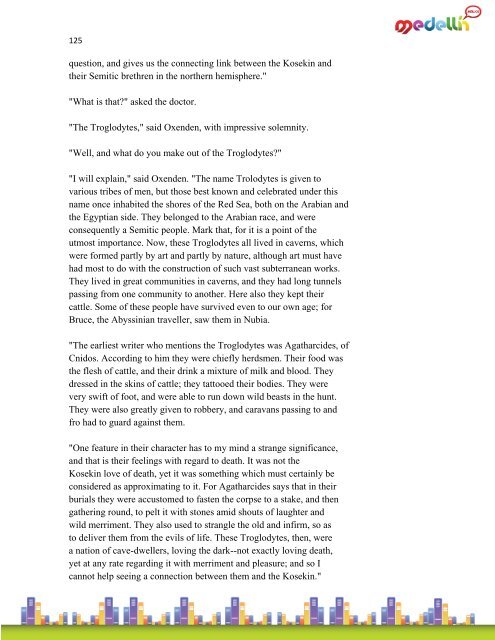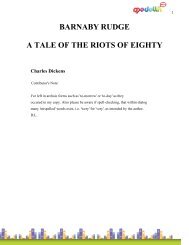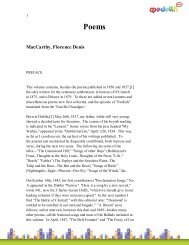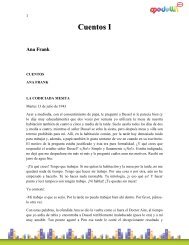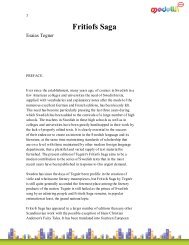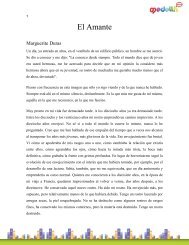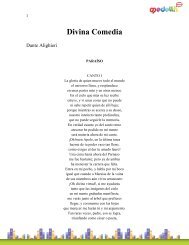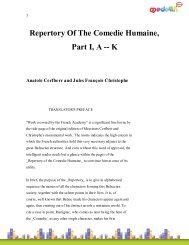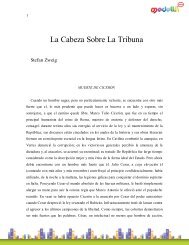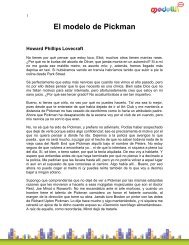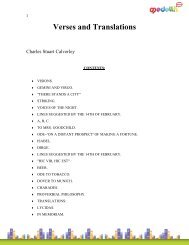A Strange Manuscript Found in a Copper Cylinder James De Mille
A Strange Manuscript Found in a Copper Cylinder James De Mille
A Strange Manuscript Found in a Copper Cylinder James De Mille
You also want an ePaper? Increase the reach of your titles
YUMPU automatically turns print PDFs into web optimized ePapers that Google loves.
125<br />
question, and gives us the connect<strong>in</strong>g l<strong>in</strong>k between the Kosek<strong>in</strong> and<br />
their Semitic brethren <strong>in</strong> the northern hemisphere."<br />
"What is that?" asked the doctor.<br />
"The Troglodytes," said Oxenden, with impressive solemnity.<br />
"Well, and what do you make out of the Troglodytes?"<br />
"I will expla<strong>in</strong>," said Oxenden. "The name Trolodytes is given to<br />
various tribes of men, but those best known and celebrated under this<br />
name once <strong>in</strong>habited the shores of the Red Sea, both on the Arabian and<br />
the Egyptian side. They belonged to the Arabian race, and were<br />
consequently a Semitic people. Mark that, for it is a po<strong>in</strong>t of the<br />
utmost importance. Now, these Troglodytes all lived <strong>in</strong> caverns, which<br />
were formed partly by art and partly by nature, although art must have<br />
had most to do with the construction of such vast subterranean works.<br />
They lived <strong>in</strong> great communities <strong>in</strong> caverns, and they had long tunnels<br />
pass<strong>in</strong>g from one community to another. Here also they kept their<br />
cattle. Some of these people have survived even to our own age; for<br />
Bruce, the Abyss<strong>in</strong>ian traveller, saw them <strong>in</strong> Nubia.<br />
"The earliest writer who mentions the Troglodytes was Agatharcides, of<br />
Cnidos. Accord<strong>in</strong>g to him they were chiefly herdsmen. Their food was<br />
the flesh of cattle, and their dr<strong>in</strong>k a mixture of milk and blood. They<br />
dressed <strong>in</strong> the sk<strong>in</strong>s of cattle; they tattooed their bodies. They were<br />
very swift of foot, and were able to run down wild beasts <strong>in</strong> the hunt.<br />
They were also greatly given to robbery, and caravans pass<strong>in</strong>g to and<br />
fro had to guard aga<strong>in</strong>st them.<br />
"One feature <strong>in</strong> their character has to my m<strong>in</strong>d a strange significance,<br />
and that is their feel<strong>in</strong>gs with regard to death. It was not the<br />
Kosek<strong>in</strong> love of death, yet it was someth<strong>in</strong>g which must certa<strong>in</strong>ly be<br />
considered as approximat<strong>in</strong>g to it. For Agatharcides says that <strong>in</strong> their<br />
burials they were accustomed to fasten the corpse to a stake, and then<br />
gather<strong>in</strong>g round, to pelt it with stones amid shouts of laughter and<br />
wild merriment. They also used to strangle the old and <strong>in</strong>firm, so as<br />
to deliver them from the evils of life. These Troglodytes, then, were<br />
a nation of cave-dwellers, lov<strong>in</strong>g the dark--not exactly lov<strong>in</strong>g death,<br />
yet at any rate regard<strong>in</strong>g it with merriment and pleasure; and so I<br />
cannot help see<strong>in</strong>g a connection between them and the Kosek<strong>in</strong>."


